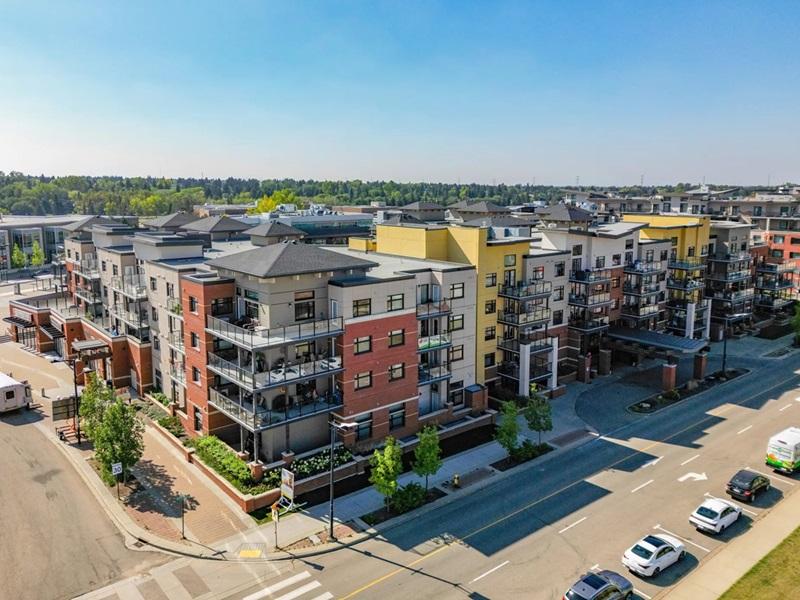GUEST SUBMISSION: For the first time in our country's history, the population increased by more than a million people last year, according to Statistics Canada. This dramatic growth signals several opportunities for the national commercial real estate market.
StatsCan said our population grew by 1.05 million to 39.57 million in 2022 and most of that growth (96 per cent) was due to international immigration.
These numbers mean that Canada is the fastest-growing country in the G7, and if these recent numbers persist Canada’s population could double in roughly 26 years.
Canada has a low birth rate even compared to other developed countries, well below the U.S. or France.
But new immigration targets are about 80 per cent higher than pre-2020 levels, meaning Canada’s immigration will continue to drive growth even if our birth rate remains muted.
There are various benefits, challenges, consequences and considerations that emerge as part of this population growth throughout Canada, especially when it comes to housing these people in the right way in the right places.
But there are also important scenarios and impacts on Canada’s commercial real estate market.
Here are five factors to consider as Canada’s population continues its remarkable growth.
The majority of immigration is “economic class”
Most of these newcomers fall into the economic migrant category, which means that many are educated, younger, well-financed and speak English, French or both.
While other classes of immigration get a lot of attention and spur political discussion, economic migration has always been, by far, the largest category.
This tends to be a positive for many real estate categories as economic immigrants help to create new business and investment, thereby sparking activity in the various commercial asset classes — especially industrial, hospitality and consumer-driven businesses.
Secondary markets may be poised to benefit from this growth
Many of Canada’s smaller cities experienced a boom during the COVID-19 pandemic.
Part of that growth stemmed from the onset of remote work coupled with worsening affordability in our largest cities. People had more freedom than ever to live where they wanted.
The fastest-growing cities last year were Moncton and Halifax. We’ve seen strong growth in Victoria, Waterloo, London and Nanaimo, as well.
The question is whether commercial real estate development will follow those people.
Right now, those aren’t cities with a lot of office towers or warehouses.
But, if affordability in places like Toronto, Vancouver and Montreal continues to create challenges, we can expect many new immigrants to start settling in smaller communities, hopefully driving new commercial investment to meet the needs of the growing populations.
Our strongest asset classes will likely get stronger
The asset classes we’ve seen most impacted by population growth are already performing extremely well.
Apartment buildings are robust because everyone needs a place to live and there hasn’t been sufficient construction in many areas; and industrial warehouses remain strong given our rising demand for consumer products — including e-commerce — from large retailers and grocery stores.
Everything we buy or consume needs to be stored and picked up for delivery somewhere, typically in urban areas and near our busiest ports.
The population boom has not had as clear an impact yet on office towers, due partly to work-from-home.
The jury is still out on bricks-and-mortar retail due to the growth of e-commerce and our rising population has not (yet) started to stoke the hotel investment industry — although we’re starting to see fresh hotel room demand amid a resurgence in international and business travel (more on that below).
It’s likely persistently high immigration levels could be a tide that, eventually, raises all boats.
Canada’s last affordable market expected to be a big draw
Alberta is generally known as the country’s last affordable housing market.
We’ve seen migration to Calgary and Edmonton from the rest of Canada because of that affordability, and partly due to Alberta’s aggressive marketing campaigns to lure skilled workers from around Canada.
The Alberta government says nearly 33,000 Canadians answered the call and arrived in Alberta the third quarter of 2022 alone. The campaigns continue.
We’re already seeing an upswing in demand for several assets in Alberta including warehouse leasing and apartments, and the province could prove to be the sweet spot for many new immigrants to the country seeking investment opportunities and an affordable lifestyle relative to other parts of the country.
Tourism and hospitality should bounce back
After suffering during the pandemic, tourism is returning — especially among business travellers.
Our growing population is going to buoy this further. We can expect busier airports, livelier hotels and growth across the hospitality industry.
A larger number of Canadians means there will be more people spending disposable income, taking more trips and welcoming more visitors as the months and years go by.
Adam Jacobs is the head of research at Colliers










